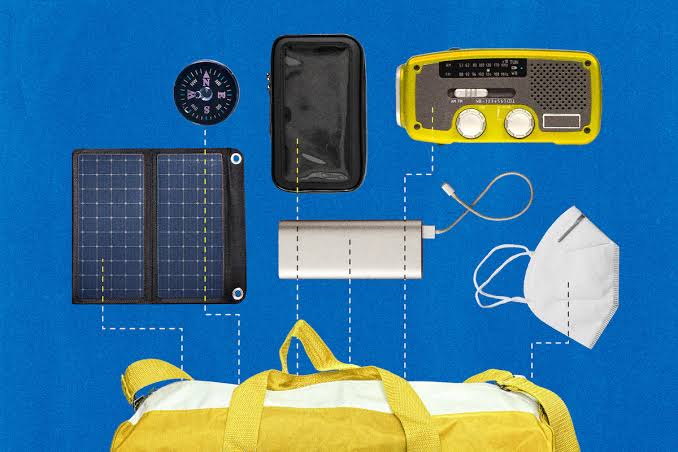Portable power stations are becoming more popular as people look for flexible and reliable energy sources for daily use and emergencies. By July 2025, these small, rechargeable units are used for outdoor trips, home backup, remote work, and disaster kits. Unlike gas generators, portable power stations are clean, quiet, and often eco-friendly, with many models able to charge with solar power. However, they do have some limits. Knowing the pros and cons is important before buying one.
Provides Reliable Backup Power
One of the most significant advantages of portable power stations is their ability to serve as a dependable backup during power outages. In a time when extreme weather events and grid failures are becoming more common, having an independent power source offers peace of mind and practical value.
Portable power stations can run essential electronics like lights, phones, medical devices, laptops, and even small appliances. This makes them particularly useful for families, elderly individuals, or anyone who depends on electricity for health or safety. In urban areas, they provide an efficient way to keep communication devices running during short blackouts.
For rural or off-grid areas, these devices can serve as the main power source for several hours or even days, depending on the capacity. Their ability to recharge through wall outlets, solar panels, or car sockets means users are not entirely cut off during emergencies. In 2025, newer models come equipped with energy management systems that optimize output and reduce unnecessary energy loss, improving overall reliability.
Portable and Convenient to Use
Another appealing feature is the ease of transportation. Unlike traditional generators, portable power stations are typically lightweight, compact, and designed for mobility. Many models now include built-in handles, wheels, and even stackable modules to make them easier to carry and store.
This makes them ideal for camping, hiking, picnics, or any outdoor event where power access is limited. Users can charge their phones, run LED lights, or even power a mini-fridge without relying on noisy, gas-powered equipment. For digital nomads and remote workers, portable stations offer a convenient way to power a laptop and Wi-Fi hotspot from a quiet, natural location.
In addition to their physical portability, they are also simple to operate. There’s no need for fuel, oil changes, or complicated startup processes. With most units offering plug-and-play interfaces and digital displays, even non-technical users can monitor power input, usage, and remaining battery life with ease.
Environmentally Friendly and Quiet Operation
One of the most celebrated features of portable power stations is their clean energy profile. Unlike gas generators, they produce no harmful emissions, making them safe to use indoors or in environmentally sensitive locations. This is especially important in today’s eco-conscious world, where reducing carbon footprints is becoming a priority for both individuals and institutions.
In 2025, many manufacturers are integrating solar compatibility into their designs. Models from companies like EcoFlow, Bluetti, and Jackery now support fast solar charging with advanced MPPT (Maximum Power Point Tracking) technology, allowing users to recharge efficiently using sunlight alone. This is a major plus for users who want an off-grid solution that aligns with green energy principles.
The absence of noise pollution is another benefit. While traditional generators are loud and disruptive, portable power stations operate silently. This makes them perfect for use in campsites, during meditation retreats, or in neighborhoods where noise ordinances are enforced. The quiet operation ensures that energy use doesn’t disturb your surroundings, enhancing the overall experience.
Versatile Charging and Output Options
Modern portable power stations are designed to accommodate a wide range of devices. They typically come with multiple ports including AC outlets, USB-A, USB-C, DC carports, and even wireless charging pads. This allows for simultaneous charging of several devices, from smartphones and tablets to drones, projectors, and portable heaters.
Some high-capacity models released in 2025 now include 240V outlets for more power-intensive devices like electric grills, power tools, or even CPAP machines. Others offer app connectivity, allowing users to control or monitor their power station remotely through Bluetooth or Wi-Fi.
This versatility makes portable stations suitable not only for recreational users but also for professionals who require mobile power for work sites, events, or emergency response efforts. As the digital lifestyle expands and our reliance on electronics grows, the ability to power multiple gadgets at once has become a major selling point.
High Initial Cost and Limited Capacity
Despite their advantages, portable power stations are not without drawbacks. The most obvious concern is the initial purchase cost. High-capacity models with long battery life and fast recharging features can be quite expensive, often costing between $500 and $2,500. For many consumers, especially those on a budget, this upfront cost can be a major deterrent.
Moreover, portable power stations typically have limited capacity compared to traditional fuel generators. While they are great for short-term use or powering small electronics, they may struggle with large appliances like air conditioners, electric ovens, or full-size refrigerators over long periods.
Battery degradation is another issue to consider. Like any rechargeable device, the battery’s capacity diminishes over time, particularly if not maintained properly. Even with the best lithium iron phosphate (LiFePO4) cells, performance may decrease after a few years of heavy use.
Dependent on Charging Infrastructure
Another downside is the reliance on charging infrastructure. Unless paired with solar panels, portable power stations need to be charged using a wall outlet or car port, which could be unavailable during extended power outages or in extremely remote locations. This makes solar compatibility a crucial feature, but not all models include solar panels in the base package.
In poor weather conditions, even the most advanced solar chargers may struggle to provide consistent energy. This can be a concern for users depending on the device for medical equipment or prolonged outdoor stays. In such cases, a power station may not serve as a standalone solution but rather as part of a broader energy strategy.
Additionally, recharging can take several hours, even with fast-charging technologies. For example, while some models in 2025 can recharge in under two hours with wall power, solar charging may require five to ten hours depending on panel efficiency and sun exposure. This lag in recharge time can limit convenience for high-consumption users.
Conclusion: Balancing Use Case and Expectations
Portable power stations represent a significant step forward in personal and mobile energy solutions. Their clean energy operation, user-friendly design, and increasing compatibility with smart and solar technologies make them an excellent choice for a wide range of applications. Whether you’re camping, working remotely, preparing for emergencies, or simply trying to reduce reliance on fossil fuels, these devices offer unmatched flexibility and convenience.
However, they are not a one-size-fits-all solution. Users must weigh the benefits against the limitations—such as cost, capacity, and dependence on charging infrastructure—before making a purchase. As the technology continues to mature in 2025 and beyond, we can expect further improvements in battery efficiency, price competitiveness, and integrated solar capabilities.
For now, portable power stations are best suited for moderate energy needs and environmentally conscious users. With careful planning and realistic expectations, they can be a valuable addition to any modern lifestyle seeking clean and reliable energy on the go.



